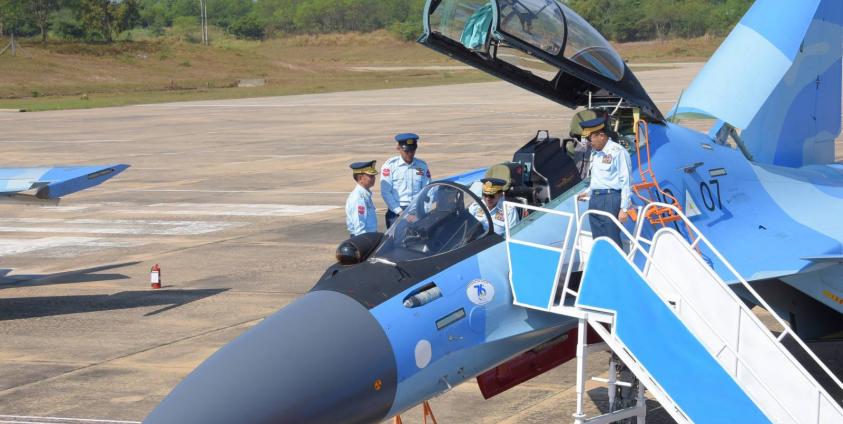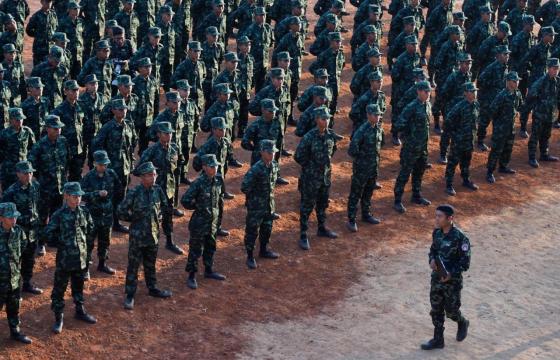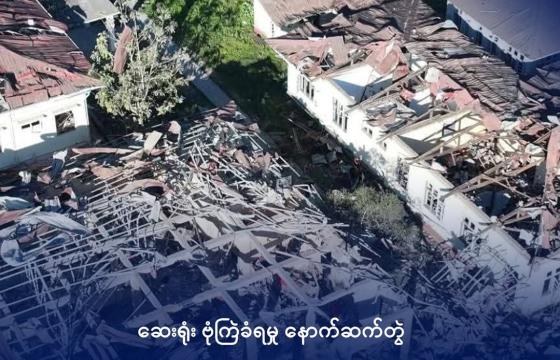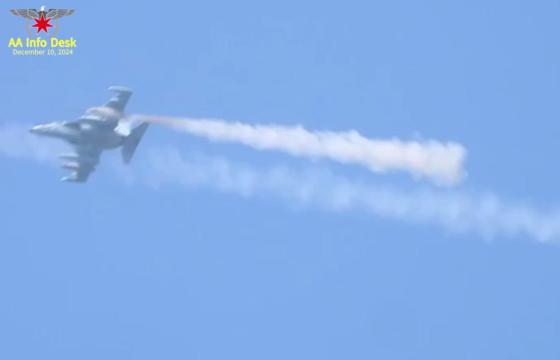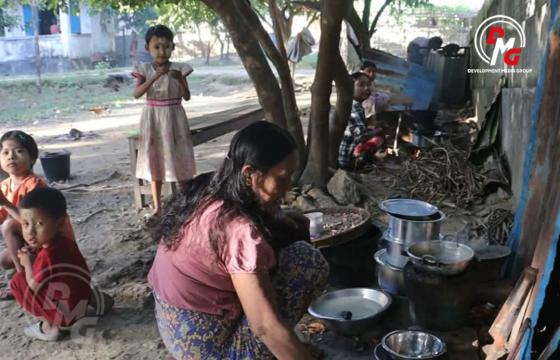During a speech commemorating the 76th anniversary of Myanmar Air Force Day on December 15th, coup junta leader Senior General Min Aung Hlaing proudly stated the active engagement of the air force in combat operations, utilizing aircraft and helicopters at full capacity in the ongoing civil war against various resistance forces.
"Proudly, the Myanmar Air Force employs air power effectively in operations, collaborating seamlessly with the Army and Navy”, Min Aung Hlaing declared. ”To secure victory in the war, the airmen are bravely risking their lives, employing aircraft and helicopters with effectiveness and efficiency, the Junta leader added.
In a desperate attempt to push back the expanding armed resistance that emerged after the coup, the Military Council has become extremely dependent on their air supremacy contain more and more losses on the ground.
A report released on December 16th by Burma News International - Myanmar Peace Monitor (BNI-MPM), reveals that 80 percent of the targets subjected to such attacks are villages populated by civilians.
The leader of the coup regime highlighted the increasing importance of air warfare capabilities in contemporary conflicts, and praised the Myanmar Air Force for fulfilling duties extending beyond airspace control and air defense, including operations against domestic insurgencies.
"The coup leader finds himself in a position where he must overly praise and favour the Air Force, as he has no other advantages left. Essentially, his current situation is like a candle burning brightly just before being completely extinguished. It will end soon”, U Than Soe Naing, a political analyst, told DMG.
According to BNI-MPM, referencing Flight Global's Air Forces Directory (2024) report, the Military Council’s Air Force possesses 91 combat aircraft, 75 combat helicopters, 31 transport helicopters and aircraft, a combined total of 93 trainer jets and helicopters, and 5 BN-2 (MPA) aircraft utilized for special operations.
Furthermore, a total of 566 civilians lost their lives across the nation due to air raids conducted by the Military Council since the coup till November 7th, BNI-MPM reported
Instances of mass casualties, involving the death of five or more individuals due to indiscriminate bombings conducted by the Military Council's Air Force, have been documented in various locations, including Maungdaw Township in Rakhine State, Nyaunglebin Township in Bago Region, Falam and Thantlang Townships in Chin State, Hpakant and Waingmaw Townships in Kachin State, Demoso in Karenni (Kayah) State, Hpapun Township in Karen State, Laukkai Township in northern Shan State, and Gangaw and Paungbyin Townships in Magway Region, as reported by BNI-MPM.
In the face of the Arakan Army's (AA) raid on police stations in Rakhine State, the Military Council resorted to helicopter airstrikes, targeting not only AA's military targets, but also endangering civilian areas. The act of harming civilians unrelated to AA by the Military Council is completely wrong”, a Kyauktaw resident woman told DMG.
BNI-MPM highlighted that the Junta’s airstrikes occurred 46 times in 2021, 187 times in 2022, and 355 times in 2023 until November 7th, indicating an upward trend year on year.
A report by Nyan Lynn Thit Analytica, which monitors junta atrocities since the 2021 coup details :
902 air strikes across Myanmar, killing at least 687 civilians between the coup and August 2023.That means according this source, it means that as of December 2023 the total number of airstrikes are well over 1000.
"Over 50 percent of Myanmar's GDP is dedicated to military spending. With the Military Council losing much of their dollar assets, their resources for acquiring jet fuel and ammunition for airstrikes is now limited and can only last for a short time”, U Than Soe Naing added.
Facts about the Junta’s US dollar reserves are hard to come by and some of these assets in foreign banks have been frozen since the coup. However most of the jet-fuel is supplied by Thai companies who may not insist on payment in dollars. As the regime’s survival is increasingly dependent on accessing jet fuel, the junta is more likely to run out of army recruits, long before it runs out of jet fuel.


